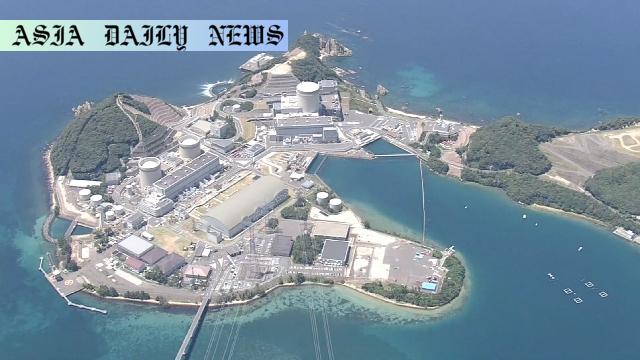Kansai Electric to restart surveys toward building new reactor at Mihama plant.
Kansai Electric Power is resuming surveys for constructing a next-gen reactor at the Mihama plant in Fukui Prefecture.
This would be the first new nuclear reactor project in Japan since the 2011 Fukushima accident.
The government’s new energy plan encourages nuclear power alongside renewable energy to meet energy demands.
Kansai Electric remains committed to building local support for the project.

Kansai Electric Restarts Reactor Surveys After a Long Hiatus
The Kansai Electric Power Company has announced plans to resume onsite surveys at the Mihama nuclear power plant in Fukui Prefecture, Japan. This initiative marks a potential milestone in Japan’s nuclear energy development, as it represents the first new reactor project since the catastrophic 2011 Fukushima Daiichi nuclear disaster. The surveys will focus on geological and technical assessments to determine the viability of constructing a next-generation reactor.
The new reactor is intended to replace an aging unit previously decommissioned at the Mihama site. Kansai Electric had initially initiated surveys in 2010 but halted them following the Fukushima accident. However, with a shift in government policies emphasizing sustainable energy practices, the utility sees an opportunity to revive the project. The company has expressed its commitment to engaging with local communities to gain their support and address any concerns regarding safety and environmental impact.
Japan’s Evolving Energy Landscape
Japan’s energy policies have undergone significant shifts over the past decade. In the wake of Fukushima, the country aimed to reduce its reliance on nuclear energy, focusing instead on renewables and other sources. However, as the demand for a stable and clean energy supply continues to grow, the government sanctioned a new energy plan earlier this year, advocating for the increased use of nuclear power alongside renewables. This balanced approach is seen as pivotal in achieving energy security and meeting environmental goals, particularly the reduction of carbon emissions.
The Mihama plant project highlights a strategic pivot for Japan, balancing lessons from the past with ongoing technological innovations. Kansai Electric’s decision to restart surveys reflects both industry confidence and the necessity to secure diverse energy sources, especially in a region susceptible to natural disasters. Nonetheless, achieving the right balance will require robust safety measures, transparent communication, and a strong regulatory framework.
The Road Ahead: Challenges and Opportunities
The path toward building a new reactor is not without challenges. The first hurdle is the geological survey itself, which will examine land stability and environmental concerns surrounding the construction site. Kansai Electric has clarified that this survey is only the first step and will not alone determine the project’s future.
Additionally, public perception remains a key factor. The traumatic memories of Fukushima and its aftermath make safety assurances a non-negotiable priority. Kansai Electric will need to demonstrate unyielding commitment to rigorous safety protocols and engineering excellence. Transparent dialogue with local communities, as promised by the company’s president, Mori Nozomu, will be critical to building trust and addressing apprehensions.
On the brighter side, a successful project could pave the way for new-generation nuclear reactors that are safer and more efficient. These advancements could serve as a blueprint for other countries grappling with similar energy challenges, particularly in regions where renewable sources alone cannot fulfill demand.
Conclusion
The decision by Kansai Electric to restart surveys at the Mihama plant is both bold and strategic. It signifies a more balanced energy approach for Japan, integrating nuclear power’s potential while respecting the lessons of the past. As the world seeks sustainable energy solutions, this initiative might well contribute to reshaping the narrative around nuclear energy, demonstrating how safety, innovation, and community engagement can coexist.



Commentary
Revisiting Nuclear Power: A Step Forward or a Risky Gamble?
The decision by Kansai Electric to reignite plans for a new nuclear reactor at the Mihama plant stirs a mix of anticipation and apprehension. On the one hand, it signals Japan’s willingness to make nuclear energy a pillar of its energy strategy once again; on the other, it reopens old wounds from the 2011 Fukushima disaster. The balancing act between addressing energy needs and ensuring public safety is both delicate and vital.
From a broader perspective, this move highlights the sheer complexity of modern energy policies. Renewables like wind and solar undoubtedly represent the future, but their intermittent nature presents challenges for stable energy supply. Nuclear power, despite its controversial past, remains a powerful option for countries aiming to curb carbon emissions and secure consistent energy output. Japan’s pivot back to nuclear power could set a precedent in how nations balance these competing priorities.
However, Kansai Electric’s decision comes with significant risks. Public trust in nuclear energy remains fragile in Japan. Every step of the proposed Mihama project will be under intense scrutiny, not just from local communities but also from regulatory authorities and environmental advocates. Kansai Electric would need to go above and beyond in demonstrating transparency, accountability, and commitment to safety.
There’s also the aspect of community engagement. As Mori Nozomu mentioned, public understanding and support are fundamental to moving forward. Establishing open channels for dialogue, addressing safety concerns candidly, and showcasing robust safety measures will go a long way in building credibility.
In conclusion, Kansai Electric’s new reactor initiative embodies both hope and caution. If executed responsibly, it could mark a new era in Japan’s energy journey, blending lessons from the past with aspirations for the future. The world will undoubtedly be watching.